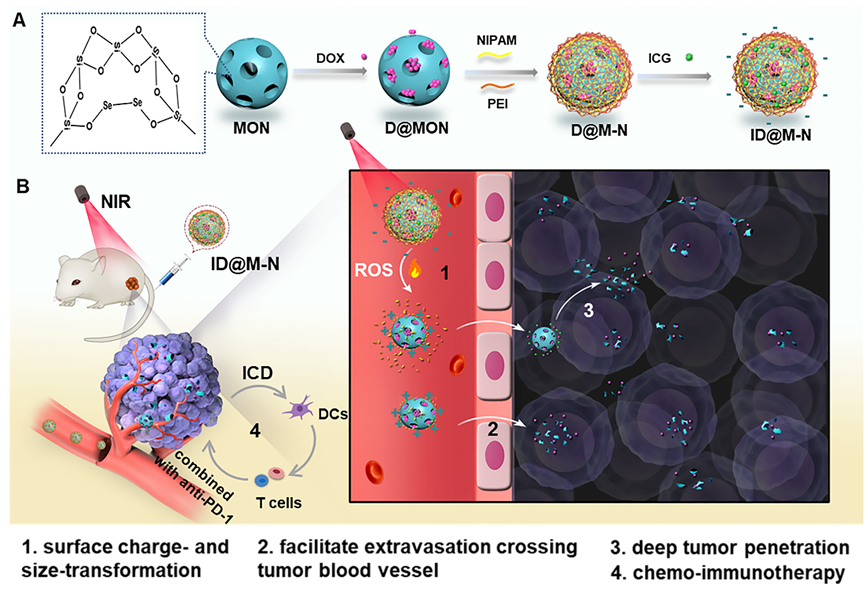Scientists from the Suzhou Institute of Biomedical Engineering and Technology (SIBET) of the Chinese Academy of Sciences and the South China University of Technology collaborated to create near-infrared (NIR)-powered nano-assemblies with size and charge dual transformation for the integration of photo-controlled chemotherapy and immunotherapy in breast cancer.
 Nanoassemblies (ID@M-N) for NIR-triggered chemo-immunotherapy. Image Credit: SIBET.
Nanoassemblies (ID@M-N) for NIR-triggered chemo-immunotherapy. Image Credit: SIBET.
The findings of the study have been recently reported in Theranostics.
Nanotechnology has novel benefits in enhancing the bioavailability of substances that are poorly soluble, accomplishing well-regulated and targeted drug release, and incorporating various therapeutic methods on the same platform.
Nevertheless, there are many biological hurdles in real-world applications, including transvascular transport, blood circulation, dense tumor extracellular matrix and malformed tumor vessels, thus, the majority of the nanoparticles are mostly localized around the outer edges of the tumor, and it is hard to enter the tumor to exercise cell-killing effect.
During this study, the team engineered diselenide-bridged mesoporous organosilica nanoparticles as a reactive oxygen species (ROS)-responsive core for the loading of chemotherapeutic agent doxorubicin (DOX). They then coated an indocyanine green (ICG)-hybrid N-isopropyl acrylamide layer to create a thermosensitive shell.
The negatively charged thermosensitive layer prevents DOX leakage, rendering prolonged blood circulation time and high tumor accumulation.
Wenfei Dong, Researcher, SIBET
When irradiated with NIR light, mild photothermal effects enable the dissociation of the thermosensitive shell to accomplish negative-to-positive surface charge reversal. In the meantime, ICG-produced ROS cleaves the diselenide bond of the organosilica core, resulting in quick matrix degradation that creates DOX-comprising smaller fragments (115-20 nm).
Such a NIR light-triggered charge and size dual-transformable nano-assembly allows tumor buildup and deep penetration, improves chemotherapy effectiveness and prompts strong immunogenic cell death effects in vivo and in vitro.
In animal research, integrated with programmed cell death protein-1 checkpoint blockade, the nano-platform considerably obstructed major tumor development and pulmonary metastasis of breast cancer, significantly decreasing the harmful side effects of free drugs.
This research offers a new system for a safe and effective combination treatment for breast cancer. The researchers will alter the antibodies on the surface of the nano-assembly to improve the active targeting of tumors and endeavor to use the platform to transport gene-editing tools for gene therapy of tumors.
Journal Reference:
Peng, J., et al. (2022) A light-driven dual-nanotransformer with deep tumor penetration for efficient chemo-immunotherapy. Theranostics. doi.org/10.7150/thno.68756.